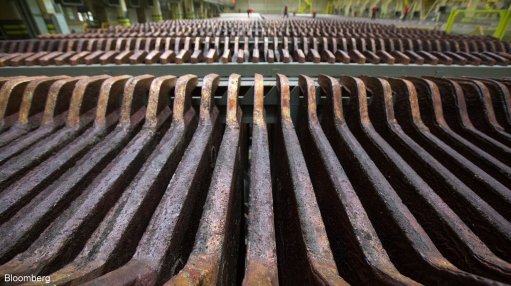UK scientists develop ‘power generating’ diamond



GROUND-BREAKING DEVELOPMENT The development could solve some of the problems associated with nuclear waste, clean electricity generation and battery life
Photo by University of Bristol
TOM SCOTT There are no moving parts involved with the diamond batteries, no emissions generated and no maintenance required, just direct electricity generation
Photo by University of Bristol
New technology has been developed that uses nuclear waste to generate electricity in a nuclear-powered battery. A team of physicists and chemists from the University of Bristol have grown a man-made diamond that, when placed in a radioactive field, is able to generate a small electrical current.
The development could solve some of the problems associated with nuclear waste, clean electricity generation and battery life. This innovative method for radioactive energy was recently presented at the Cabot Institute’s annual lecture, in the UK, titled ‘Ideas to change the world’. The Cabot Institute is the University of Bristol’s flagship cross-disciplinary research institute, conducting “world-leading” research on the challenges arising from how people live with, depend on and affect the planet.
The Cabot Institute notes that, unlike most electricity-generation technologies, which use energy to move a magnet through a coil of wire to generate a current, the man-made diamond is able to produce a charge simply by being placed in close proximity to a radioactive source.
Bristol Interface Analysis Centre materials and Cabot Institute member Professor Tom Scott explains that there are no moving parts involved, no emissions generated and no maintenance required, just direct electricity generation.
“By encapsulating radioactive material inside diamonds, we turn a long-term problem of nuclear waste into a nuclear-powered battery and a long-term supply of clean energy,” he states.
The university’s research team have demonstrated a prototype ‘diamond battery’ using the nickel-63 radioisotope as the radiation source. They are currently working to significantly improve efficiency by using the carbon-14 (C14) radioisotopes.
This radioactive version of carbon is generated in graphite blocks used to moderate the reaction in nuclear power plants. Research by academics at Bristol has shown that the radioactive C14 is concentrated at the surface of these blocks, making it possible to process it to remove most of the radioactive material. The extracted C14 is then incorporated into a diamond to produce a nuclear- powered battery.
The UK currently holds about 95 000 t of graphite blocks and by extracting C14 from them, their radioactivity decreases, reducing the cost and challenge of safely storing this nuclear waste.
Bristol School of Chemistry faculty member Dr Neil Fox elaborates that C14 was chosen as a source material because it emits a short-range radiation, which is quickly absorbed by any solid material. “This would make it dangerous to ingest or touch with your naked skin, but safely held within a diamond, no short-range radiation can escape. In fact, a diamond is the hardest substance known to man; there is literally nothing we could use that could offer more protection.”
He notes that, despite their low power, relative to current battery technologies, the lifetime of these diamond batteries could “revolutionise” the powering of devices over long timescales. Fox points out that the actual amount of C14 in each battery has yet to be determined, but one battery, containing 1 g of C14, would deliver 15 J/day, which is less than an AA battery.
He comments that standard alkaline AA batteries are designed for short timeframe discharge, with one battery weighing about 20 g, which has an energy storage rating of 700 J/g. Fox says, if operated continuously, this would run out in 24 hours.
He remarks that using C14, the battery would take 5 730 years to reach 50% power use, which is about as long as human civilisation has existed.
“We envision these batteries to be used in situations where it is not feasible to charge or replace conventional batteries. Obvious applications would be in low-power electrical devices where long life of the energy source is needed, such as pacemakers, satellites, high-altitude drones or even spacecraft.
“There are so many possible uses that we are asking the public to come up with suggestions of how they would use this technology by using #diamondbattery [on the social media platform Twitter],” Scott concludes.
Comments
Press Office
Announcements
What's On
Subscribe to improve your user experience...
Option 1 (equivalent of R125 a month):
Receive a weekly copy of Creamer Media's Engineering News & Mining Weekly magazine
(print copy for those in South Africa and e-magazine for those outside of South Africa)
Receive daily email newsletters
Access to full search results
Access archive of magazine back copies
Access to Projects in Progress
Access to ONE Research Report of your choice in PDF format
Option 2 (equivalent of R375 a month):
All benefits from Option 1
PLUS
Access to Creamer Media's Research Channel Africa for ALL Research Reports, in PDF format, on various industrial and mining sectors
including Electricity; Water; Energy Transition; Hydrogen; Roads, Rail and Ports; Coal; Gold; Platinum; Battery Metals; etc.
Already a subscriber?
Forgotten your password?
Receive weekly copy of Creamer Media's Engineering News & Mining Weekly magazine (print copy for those in South Africa and e-magazine for those outside of South Africa)
➕
Recieve daily email newsletters
➕
Access to full search results
➕
Access archive of magazine back copies
➕
Access to Projects in Progress
➕
Access to ONE Research Report of your choice in PDF format
RESEARCH CHANNEL AFRICA
R4500 (equivalent of R375 a month)
SUBSCRIBEAll benefits from Option 1
➕
Access to Creamer Media's Research Channel Africa for ALL Research Reports on various industrial and mining sectors, in PDF format, including on:
Electricity
➕
Water
➕
Energy Transition
➕
Hydrogen
➕
Roads, Rail and Ports
➕
Coal
➕
Gold
➕
Platinum
➕
Battery Metals
➕
etc.
Receive all benefits from Option 1 or Option 2 delivered to numerous people at your company
➕
Multiple User names and Passwords for simultaneous log-ins
➕
Intranet integration access to all in your organisation




















